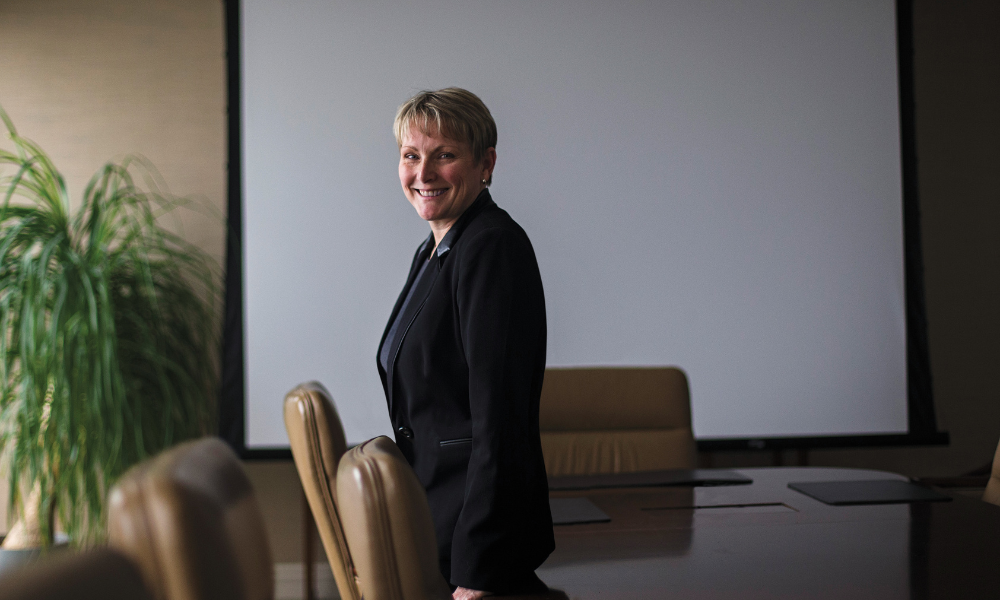As she departs CETFA, the outgoing executive director explains just how far ETFs have come in Canada since she took the reins in 2012

Pat Dunwoody will say she didn’t found the Canadian ETF Association (CETFA) but will take some credit for bringing the organization to life. She joined CETFA in Autumn of 2012 when the organization had three members — BMO, Horizons (now Global X), and Claymore Investments (which would be bought by Blackrock). CETFA had its articles of incorporation and its bylaws and not much more.
Dunwoody became CETFA’s executive director, leading its efforts to educate advisors, encourage new members, and grow the place of ETFs in Canada. Earlier this month Dunwoody announced that she would be leaving CETFA to pursue a new role as the founding CEO of Mineralchemy. She leaves CETFA with 18 ETF provider members and 18 associate members, up from its three founding members when she started. She leaves the Canadian ETF industry with $409 billion in AUM, up from roughly $50 billion in AUM when she started. Growth, she says, has been a common theme at CETFA from the outset.
“The people in the ETF industry are incredibly passionate about their product, and they knew in their hearts that there was an industry of growth here from the start,” Dunwoody says. “You could look around the world and see what happening in the US and globally, we knew that we were behind but we were going to catch up. We were small, but that didn’t deter us.”
Dunwoody says that education has always been core to her work at CETFA. Through meetings, articles, media appearances, and publications she led an effort at CETFA to debunk myths and educate advisors and investors about ETFs. Liquidity was a frequent topic of conversation as advisors perceived greater risks in ETFs than there actually were. Dunwoody’s response was to be everywhere, always present with webinars or articles that dispelled those myths and gave advisors more security in their understanding of ETFs. She says that those educational efforts helped to legitimize the growth that the Canadian ETF issuers were already experiencing and helped them continue their momentum.
Some of that work also involved conversations with dealers and advisors about their businesses. ETFs fit naturally within a fee-based practice, so Dunwoody worked on convincing the industry that fee-based was the way to go. That work took years, and included developing a way for MFDA advisors to integrate ETFs into their platforms. Those conversations, she says, were more about including ETFs rather than replacing mutual funds.
“I had 25 years in the mutual fund industry, I had the name and the voice that I could reach out and at least get people to turn their head and start listening to the product, and then reaching out to the other associations and organizations that I had come to know,” Dunwoody says. “I did not say one or the other, I was always very clear that ETFs just need to be part of your shelf. Don’t get rid of others, but add us to the shelf.”
Now ETFs are as well established in Canada as their mutual fund counterparts. Even dedicated mutual fund providers have begun issuing ETF series of their products. The advisor community is proactive in calling for ETF solutions. Dunwoody sees ETFs fitting nicely within the whole industry’s transition away from the sale of products towards more of a holistic wealth management model.
Dunwoody now sees this as an ideal moment to step back from CETFA. She’s helped the organization grow from start-up to institution, in line with the wider industry. She has served for years as the sole driver for CETFA and a point of connection for the whole ETF industry. As CETFA has grown and become more established, however, she has seen a new opportunity to become an entrepreneur.
Along with a business partner, Dunwoody has built a new organization with three distinct lines of business: a bespoke consulting firm, a land development company, and as the license holders for a Taiwanese-made transdermal recovery patch. While the work she’s doing may seem like a departure from a career spent in financial services, she sees a connection between what she did as the executive director of CETFA and what she will be doing now as an entrepreneur.
“I never considered myself an entrepreneur, I was always in a company. But when you look at what an entrepreneur is and does, I had that definition in the back of my mind as I did my work,” Dunwoody says. “I just never labelled it that because I did it between companies. When I look at what an entrepreneur is as someone who wants to do something different, to grow something and to succeed in it, I think I’ve had those skillsets all along. I just never had the nerve to do it on my own. Now I’m at a time in my life that if I’m not going to do it now, I’m never going to do it. So, let’s give it a shot.”



